Clinical Differential Diagnosis
(Lobetti DECVIM http://www.sonopath.com/specialists_lobetti.asp):
Anorexia/weight loss – renal/hepatic/cardiac/pancreatitic disease, pyothorax, neoplasia, hyperthyroidism
Renal disease – chronic kidney disease, neoplasia, pyelonephritis, hydronephrosis, renoliths, ureteroliths
Image Interpretation
(Henderson DVM, Lindquist DABVP)
Sonographic Differential Diagnosis
(Henderson DVM): Kidney Mass - the findings are severe -DDx: primary renal carcinoma, primary renal TCC, renal lymphosarcoma - may appear as diffuse disease or focal mass. Less likely: renal malignant histiocytosis or mastocytosis, malignant osteosarcoma, hemangiosarcoma .
2) Liver - the findings are moderately-severe - DDx:
a) Hepatic lipidosis / Cholangiohepatitis
b) Infiltrative neoplasia (lymphoma - probable in this case)
c) Chronic vs. Acute hepatitis or cholangiohepatitis (bacterial vs. sterile vs. toxin)
3) Lymph nodes - the findings are moderate - DDx: infiltrative neoplasia is likely vs. reaction
Due to the involvement of the liver, gastrointestinal tract, and multiple enlarged lymph nodes, lymphosarcoma is a highly likely.
Sampling
The right kidney and the liver were aspirated and slides are submitted for cytology review.

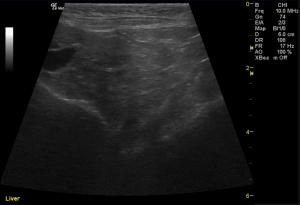
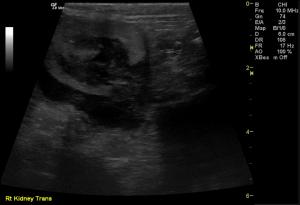
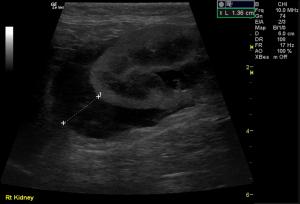
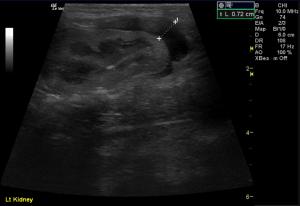
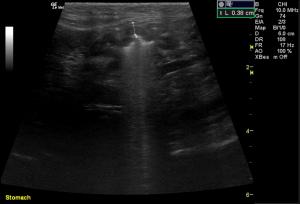

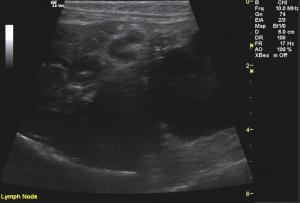

Comments